Repairing a kitchen unit hinge
Kitchen unit hinges tend not to break, but the hinge plates will often loosen through wear and tear. Sometimes you can use a strong adhesive to fill the hinge plate holes before pressing the plate back in position. However, if this doesn’t work or the fixing holes for the plate are too damaged, another option is to move the plate slightly making new fixing holes – this also means you have to move the hinge on the door.
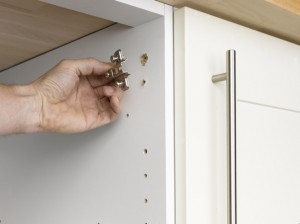 |
1. Remove the door and unscrew the hinge plate. |
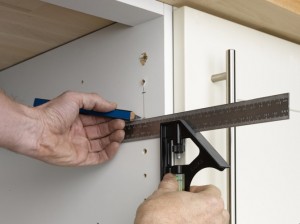 |
2. Mark a new position above or below the old, damaged screw holes where you will be able to get a firmer fixing to refit the plate. Be as accurate as possible when marking new fixing holes – a combination square is the ideal tool here. |
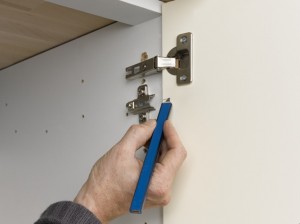 |
3. Drill pilot holes and refix the hinge plate. Hold the door against the unit and measure and mark the new hinge position on the cupboard door using the new hinge plate position as a guide. |
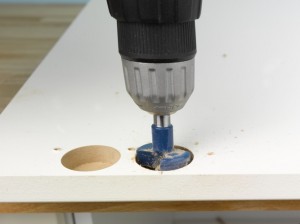 |
4. Remove the old hinge from the door and use a hinge cutting bit to drill a recess at the mark to reposition the new hinge. Take care not to drill too far into the door. |
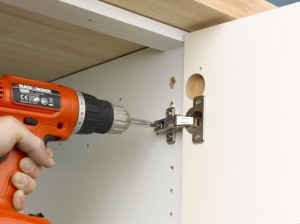 |
5. Position the hinge in the new recess and screw it in place, making sure that it is perfectly flush, and rehang the door on the hinge plate. Although you need to be as accurate as possible with your measurements, any small adjustments in the door positioning can be made by unscrewing slightly, and sliding the hinge plate up or down the unit (most varieties allow a little movement), as well as turning the adjustment screw in the door hinge. |
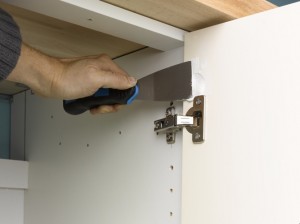 |
6. Fill any old plate and hinge holes on the door or inside the unit and sand smooth when dry. Paint over sanded areas for a neat finish. |
